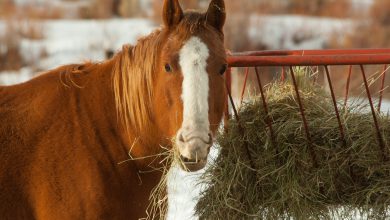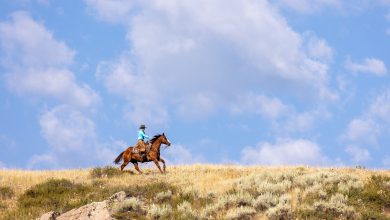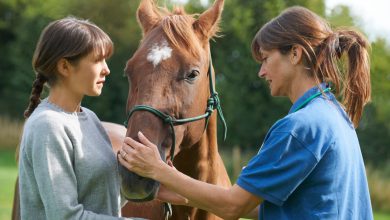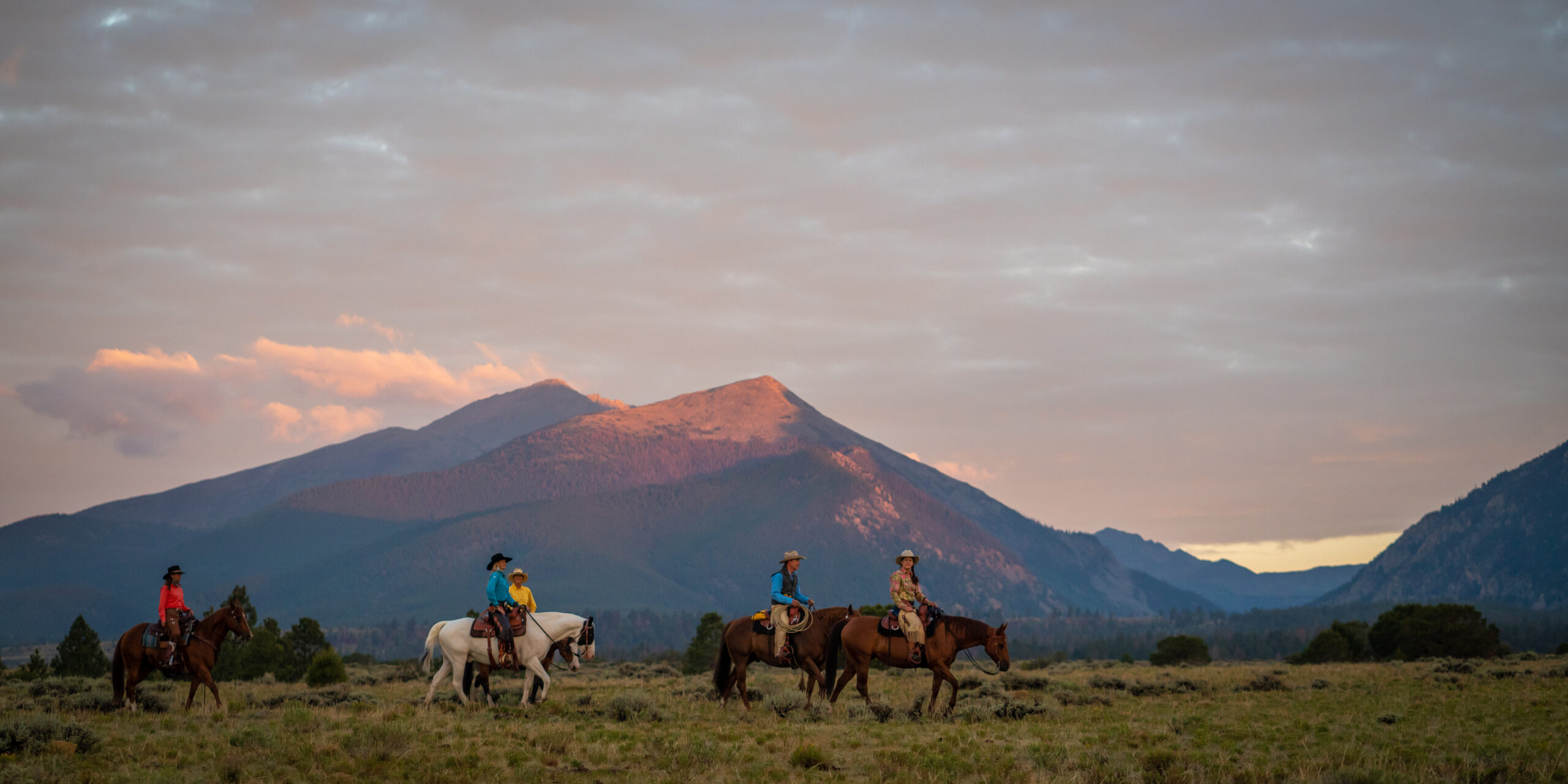
The trail horse is an incredible creature. He’s brave and courageous, goes where many horses won’t, carefully navigates tough terrain, and boldly carries you to new country. We spend quite a bit of time thinking about the joint health of the performance horse, but don’t neglect your trail horse’s comfort and well-being when it comes to healthy joints. I’m going to discuss ways to preserve the health of your trail horse’s joints, how I implement proactive measures, and how I keep his joints happy on the trail.


The Importance of Joint Health for the Trail Horse
I would like to preface this by specifying that I live in the Rocky Mountains. And there’s a reason they call this mountain range rocky. This means that the terrain I am used to riding in is tougher terrain than most people think of, when they picture trail riding. When I think of trail riding, I think of difficult and steep terrain, rocky, and often uneven and inconsistent.
With this steep terrain, and the way the horse has to use his hind end and his hocks, both ascending and descending; his joints are very active. I don’t expose this type of country to trail horses until they’re about four-years-old. Until then, they’re bodies aren’t mature enough to even handle it. Trail riding puts a lot of wear and tear on joints, so we need to be proactive in considering joint health, and understand the importance of it.
On top of this, think about the qualities you love in a good trail horse. The older he gets, the better he gets. A solid trail horse only gets more reliable, and therefore, more valuable over time. Unlike a show ring career where you show hard for a few years and then take it easy, these horses are going to work hard their entire career. This means that the longevity piece is super important. If you think of it in those terms; the endurance factor, inconsistent terrain, difficult hill work, are absolutely putting as much wear and tear on the horse as what high performance horses endure.
How Fitness Meshes With Joint Health
Fit horses are healthier, their muscles, tendons, and ligaments are stronger, which in turn, helps protect the joints.


A properly conditioned horse is less likely to injure himself on the trail. Fit horses are stronger, which is important for joint health.
Photos by Dan Ballard, courtesy of Julie Goodnight.
A fit horse is less likely to injure himself. And can navigate tough country easier than an out of shape horse. There’s also the longevity factor as our horses get to middle age or past it. Just like in humans, we don’t do him a favor letting him get unfit or out of shape. It gets harder and harder to bring him back as he ages.
And middle age is when these horses are getting into their prime. It’s a disservice to your horse to let him sit idle in a small pen, and then pull him out for a tough trail ride without properly conditioning him first. Depending on how long he’s been idle, factored in with his age, it can take a long time to get that horse fit enough to do much. You risk greater injury because you’re asking a horse to perform that doesn’t have the strength to do the maneuver or protect his joints.
And it’s not just joints and muscles. It’s all of the soft tissues that become weak with lack of exercise. All of that weakness makes the horse more prone to injury when we ask him to do things like navigate rocky country, go up and down hills, and balance on uneven ground. So when it comes to protecting your trail horse’s joints, fitness is everything.
Know Your Horse; Know the Warning Signs
You know your horse best. You know his baseline energy levels, behavior, and physical health. Knowing how your horse normally looks and acts can give you a good idea that he needs support, if you notice a change in his day-to-day behavior. I pay close attention to how our horses look in their stalls in the morning, their posture, alertness, behavior, signs that they laid down. I look for any subtle signs they don’t feel great or have any stiffness or soreness. Your horse will tell you if he doesn’t feel good, if you just listen.
Take time to look your horses over when you do morning chores. And know his baseline health characteristics so you can notice any changes. Photos by Dan Ballard, courtesy of Julie Goodnight.
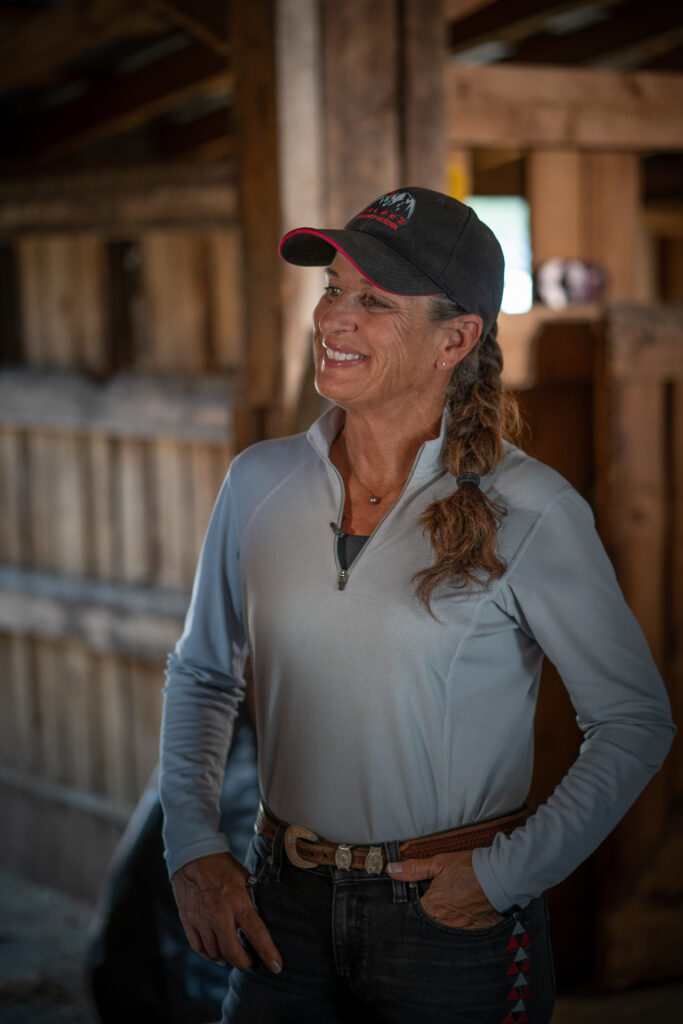

One thing I really pay attention to when it comes to horses that have recently been ridden hard or are older, is how they feel when I first swing a leg over. I just throw the reins and let him pick the pace. Often, that horse might feel reluctant to move at first. I always just let him take his time to warm-up. Then, I’ll reach a point where he feels normal, stretched out, and is using his body evenly, and then it’s time to start the warm-up. Pay attention to how long that process normally takes. And you’ll be primed and ready to notice if that changes for the better or the worse.
If you’re looking for soreness or reluctance to move out, I like to remind people that those changes often come the day or two after a hard ride. Whether he’s muscle sore, joint sore, or hoof sore, discomfort might not show up immediately. Don’t let the day of the ride be your sole judgement. Keep a close eye on him for a few days after a long ride, where you’re more likely to see the signs that your trail horse needs joint support.
When to Start Support
Regular warning signs of joint problems are basically simple math. Age + wear and tear = the need for joint support. We used to believe that feeding joint supplements, like Cosequin®, was only important for older horses. However, scientific research has shown that Cosequin® is beneficial for younger horses. Once I learned that, we now start horses on it from an early age.
All of our riding horses are on either the Cosequin® ASU Pellets or the Cosequin® ASU Joint and Hoof Pellets. There’s a whole family of great products. And we tailor our choice of joint support to the horse and his individual needs. For instance, I have a young horse that we bought last year who came to us from Texas. He has white feet, and it will take some time for his soft feet to adapt to our dry, rocky climate. So we have him on the Cosequin® ASU Joint and Hoof, which provides the best of both worlds. Another effective choice in a situation like this would be Calxequin hoof supplement, from the makers of Cosequin®.
Keep Joints Healthy
There is a long list of things you can do to support joint health. We work with our farrier to ensure that our horses are balanced, and traveling well, as this is a key part of joint health. Your farrier becomes increasingly important as you train a young horse, to make sure he’s moving well.
We have a performance horse vet that takes care of our horses and we are always analyzing our horses for changes that may be red flags for health issues or joint problems. One of the best things you can do to prevent joint damage in your trail horse, is simply be conscientious. Start with the mindset that keeps you thinking ahead, considering what you can do to protect your horse and to keep him sound and healthy.
This might be as simple as, “I don’t want my horse standing on concrete.” Even if there are pads over the concrete, I don’t want him there overnight. Be mindful of what you’re asking your horse to do, and how it will impact his joints. Riding in the rocks is hard on horses. Drilling difficult maneuvers in the arena over and over not only ruins his attitude but also wears him out for no good reason. When you push your horse past his limits often, you run the risk of injury, behavior issues, and added wear and tear on his joints.
[Learn: Julie Goodnight Teaches You About Tying on the Trail]Other Ways to Protect His Joints on the Trail
When you combine lifestyle management with joint supplements, and mindful riding, you are already helping your horse have a leg up on joint health. There are a few other things you can consider to support joint health and comfort of your trail horse.
Consider the country you’re riding in. I think that the terrain needs to be age-level appropriate for the horse, and skill-level appropriate for the horse. If you take a green horse that’s never been off the farm and throw him into very difficult mountain terrain you run the risk of not just injury, but scaring him and damaging his mindset.
Considering skill level and physical conditioning is also important for the rider. If I want to take a grandbaby or a friend that doesn’t ride out on one of my horses, we’re going to ride the easiest terrain, so I can coach the rider in a way that protects the horse. If the rider is out of balance, bouncing, and lurching to the side, the horse is much more prone to injury in conditions like that.
Be a Good Trail Partner For Your Horse
At the end of the day, there are many ways you can support the joint health of your trail horse. Much of it comes down to riding smart, preparing your horse, and taking appropriate measures like feeding a good joint supplement.
Even though riding is a great workout, you’re sitting on that horse as a passenger. It’s easy to forget that your horse might be getting tired when it’s hot or the terrain is rough. Factor in rest periods for your horse, be aware of his effort level, and monitor his breathing and heart rate. Know when to be done for the day, and be watchful for signs of joint pain or health issues. He’ll tell you. If you just listen.
